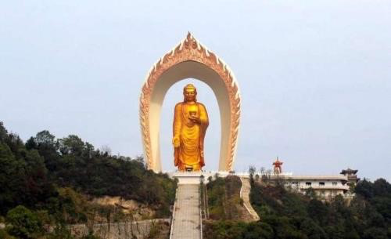
China is exporting its own version of Buddhism throughout the world that is sympathetic to the Chinese government and the Communist party as way of spreading its “soft power,” according to Yoshiko Ashiwa of Hitotsubashi University and David L. Wank of Sophia University. Speaking at a webinar series on how religions are serving as a form of soft power by sponsoring nations (mainly looking at the Islamic world) at the Berkley Center for Religion and World Affairs of Georgetown University in mid-November, Ashiwa and Wank noted that China is using Buddhism to exert such international influence as it has previously done with Confucianism.
China’s establishment of Confucian Institutes in the early 2000s around the world raised charges that the country sought to covertly advance its political agenda and interests. The promotion of a distinctly China-based Buddhism abroad has been far less confrontational and political than the Confucian Institutes, as such efforts are not promoted under one brand and rather seeks to extend its national Buddhism through different organizations working in different countries. Ashiwa and Wank said that China and its president Xi Jingping are not so much interested in spreading Buddhism as a religion as much as using Buddhism as a way to promote Chinese culture, particularly in countries where it has strategic interests.
 The Buddhism being promoted is based in “patriotic” associations—much as state-approved Christian churches and mosques belong to patriotic societies— that are registered and supported by the Communist Party. The policy of spreading Buddhism as a form of Chinese culture was inaugurated in 2015 and has various objectives depending on the region it is targeting. In most Asian countries, the patriotic Chinese Buddhism seeks to work with established Buddhist groups and establish fraternal relations among Buddhist clergy and monks while strengthening their ties to China. In other Asian countries, such as Japan, India, and Taiwan, China is competing with Buddhist bodies and institutions to establish its supremacy and leadership, which may have an impact on the homeland. For instance, “Chinese clerics and devotees are recovering the Shingon school of the Vajrayana tradition that disappeared in China but still exists in Japan. This will create an alternative Chinese Vajrayana school to Tibetan Buddhism within the PRC,” Ashiwa and Wank add. Meanwhile, in Western countries, a deliberate strategy of Buddhist temple building has been pursued to serve the many immigrants from mainland China. In strongly multicultural societies such as Australia and Canada, newly created pilgrimage sites draw Chinese tourists and Buddhists while they also serve as Chinese culture theme parks for the general population. Ashiwa adds that “social welfare” projects sponsored by the new Chinese Buddhist groups are also common as are meditation centers that are “open to non-Buddhists, offered to Westerners in a manner similar to that of Chinese cuisine” served to the non-Chinese. The researchers concluded that the new China-sponsored Buddhism will encounter a diversity of ecumenical Buddhist groups in the U.S. and may be influenced by such pluralism as much as they attempt to shape American Buddhism.
The Buddhism being promoted is based in “patriotic” associations—much as state-approved Christian churches and mosques belong to patriotic societies— that are registered and supported by the Communist Party. The policy of spreading Buddhism as a form of Chinese culture was inaugurated in 2015 and has various objectives depending on the region it is targeting. In most Asian countries, the patriotic Chinese Buddhism seeks to work with established Buddhist groups and establish fraternal relations among Buddhist clergy and monks while strengthening their ties to China. In other Asian countries, such as Japan, India, and Taiwan, China is competing with Buddhist bodies and institutions to establish its supremacy and leadership, which may have an impact on the homeland. For instance, “Chinese clerics and devotees are recovering the Shingon school of the Vajrayana tradition that disappeared in China but still exists in Japan. This will create an alternative Chinese Vajrayana school to Tibetan Buddhism within the PRC,” Ashiwa and Wank add. Meanwhile, in Western countries, a deliberate strategy of Buddhist temple building has been pursued to serve the many immigrants from mainland China. In strongly multicultural societies such as Australia and Canada, newly created pilgrimage sites draw Chinese tourists and Buddhists while they also serve as Chinese culture theme parks for the general population. Ashiwa adds that “social welfare” projects sponsored by the new Chinese Buddhist groups are also common as are meditation centers that are “open to non-Buddhists, offered to Westerners in a manner similar to that of Chinese cuisine” served to the non-Chinese. The researchers concluded that the new China-sponsored Buddhism will encounter a diversity of ecumenical Buddhist groups in the U.S. and may be influenced by such pluralism as much as they attempt to shape American Buddhism.